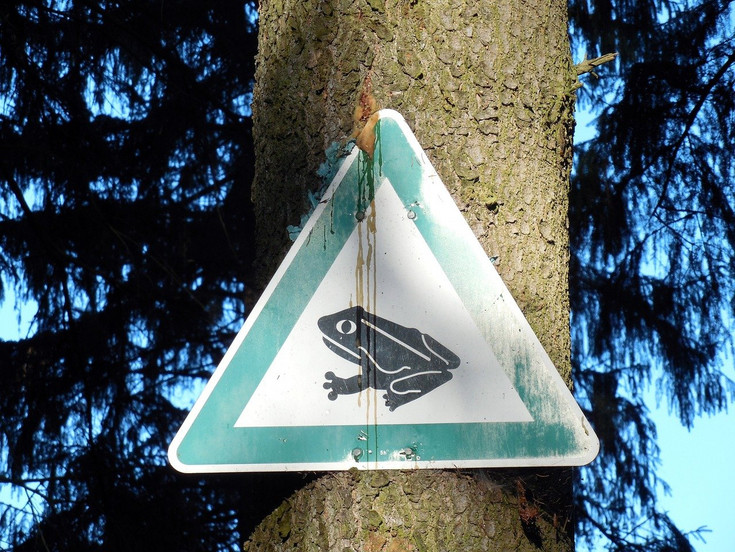21.02.2022 - Frogs migrate to the apricot blossom

© pixabay
Every year, thousands of amphibians are run over on Austria's roads. Amphibian protection measures are widely available, but need to be installed in time for migration. The University of Natural Resources and Applied Life Sciences Vienna (BOKU), the Central Institute for Meteorology and Geodynamics (ZAMG), the Austrian Society for Nature Conservation and the Natural History Museum Vienna set the goal to better predict the beginning of amphibian migrations. The analysis of more than 11,500 observations shows that the flowering times of apricot and sal willow are good predictors of amphibian migration and can thus provide the starting signal for conservation measures.
Predicting amphibian migration - why is it important?
In order to mitigate the danger of roads for amphibians during their seasonal migration, temporary protection measures are used in Austria in addition to permanent facilities (so-called amphibian tunnels). For this purpose, protective fences are usually erected by volunteers along particularly endangered road sections and checked every day to see if there are any animals on site. Each animal is carried across the road by hand and released there. The challenge here is that the amphibian migration is weather-dependent and starts at different times each year, and the fences must be in place well in advance of the start of the migration. If the migration starts earlier than expected, it means more amphibians run over; if the amphibian migration starts later than expected, it means unnecessary man-hours spent by volunteers.
What do plants have to do with amphibians?
At first glance, amphibian migration has nothing to do with plants, but amphibian migration is influenced primarily by temperature and day length, just like the flowering and leaf unfolding of plants. A team of researchers from the Institute of Zoology at BOKU Vienna, ZAMG, the Austrian Society for Nature Conservation and the Natural History Museum Vienna therefore analyzed the temporal occurrence of the amphibian migration of the grass frog and the common toad and the flowering and leaf development of seven plant species. For this purpose, a unique dataset of a total of 11 569 observations from 18 years (2000-2018) from four Citizen Science projects was available.
The result
According to statistical model calculations, the flowering of apricots and saltwillows is particularly suitable for estimating the onset of grass frog migration. The earlier the apricot bloom, the earlier the grass frog migration. In the years analyzed, the apricot flowered almost simultaneously with the grass frog migration, while the sal willow flowered about 20 days before. According to the model, the saltwillow is also suitable for estimating ground toad migration.
Data from Citizen Science
These results and conclusions could only be achieved with the help of the large amount of data collected by volunteers in the Citizen Science projects naturbeobachtung.at, Roadkill, Herpetofauna and Phenowatch. "Citizen Science makes it possible to investigate complex natural science questions that require data over long periods of time and from large study areas," says Florian Heigl, founder and coordinator of Austria Researches at BOKU. "We want to take this opportunity to thank all Citizen Scientists who made this study possible and invite all interested people to join Citizen Science projects and actively contribute to science."
Studie: 10.1038/s41598-021-00912-4
https://www.nature.com/articles/s41598-021-00912-4
The four Citizen Science projects:
naturbeobachtung.at (naturschutzbund Österreich) www.naturbeobachtung.at
Phenowatch (Zentralanstalt für Meteorologie und Geodynamik Wien) www.phenowatch.at
Roadkill (Arbeitsgruppe Citizen Science, Institut für Zoologie) www.roadkill.at
Amphibien und Reptilien Österreichs unter Beobachtung (Naturhistorisches Museum Wien) nhm-wien.ac.at
Many more Citizen Science projects to join can be found on the platform Österreich forschtwww.citizen-science.at.
Contact:
DI Maria Peer
Universität für Bodenkultur Wien (BOKU)
Institut für Zoologie
maria.peer(at)boku.ac.at
